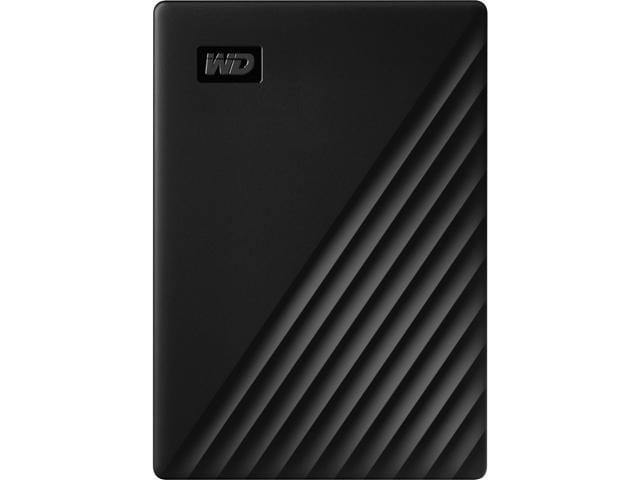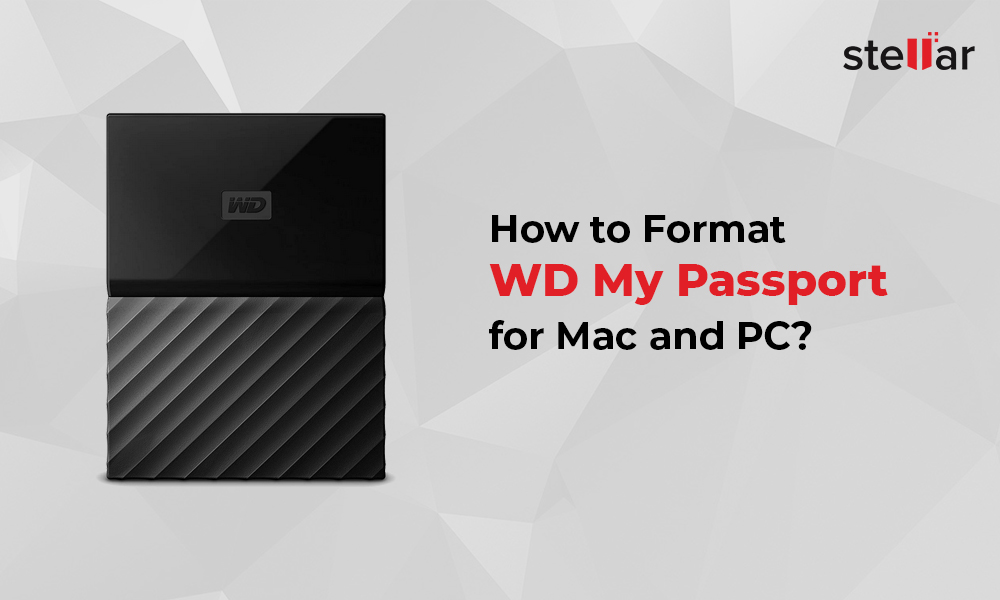
- VIEW A WE MY PASSPORT FOR MAC ON PC FOR MAC OS X
- VIEW A WE MY PASSPORT FOR MAC ON PC INSTALL
- VIEW A WE MY PASSPORT FOR MAC ON PC FULL
- VIEW A WE MY PASSPORT FOR MAC ON PC WINDOWS
While earlier iPods were formatted in HFS+ and this system confers some advantages in Mac-only environments, this is probably not something you should worry about unless you already know what you are doing. Current iPods come formatted by default in a format which can be read by both systems (FAT32) and should probably be left this way unless specific needs exist with respect to alternate usage (e.g. While this does have limitations, based on the limitations of FAT32, it may be a good compromise solution for many users.Ħ. All documents are then placed on the FAT32 partition, where they are accessible to both operating systems.

VIEW A WE MY PASSPORT FOR MAC ON PC FOR MAC OS X
This system consists of boot partitions in HFS+ and NTFS for Mac OS X and Windows, respectively, plus a third partition in FAT32. If you are using an Intel Mac, one configuration that is very popular is to create a three partition system.
VIEW A WE MY PASSPORT FOR MAC ON PC WINDOWS
Note however that, should this drive be taken to other Windows or OS X computers, it will not work without installation of the extensions.ĥ.
VIEW A WE MY PASSPORT FOR MAC ON PC INSTALL
If the device is to be mounted on both Windows and OS X computers, and the user has sufficient privileges on all computers with which it will be used to install the EXT2FS extensions discussed above, then finally, EXT2FS may be an excellent solution. For this purpose, it may be slightly advantageous to make the server a Mac OS X computer, so that the file system complies with POSIX.Ĥ. Then use that computer as a server to share that volume with other computers. Alternatively, if possible, mount the device on a computer on the network which is always turned on, and format it in the native format of that computer. If the device will be mounted on both Windows and Mac computers, and you will not be using very large files (all files <4 GB) use FAT32. If the device will only be used in Windows, use NTFS, for the same rationale.ģ. This will offer the most complete support for Mac OS X features.Ģ. If the device will only be used on a Mac OS X computer, use HFS+. One important question that gets asked frequently at MacRumors is: how should I format my external device? Here are some suggestions, based on the above limitations of each filesystem.ġ. Likewise, while a Mac OS computer cannot write to an NTFS volume it mounts itself, it can write to an NTFS volume being served by a Windows computer. For instance, a Windows client that is accessing a served HFS+ disk that is served from a Mac OS X computer (a "shared" disk across the network) can write to that disk if the server has granted permission. Limitations can be bypassed by serving a disk from a server for which the format is native. The Mac OS implementation is available at Sourceforge the Windows implementation is available here.Īnother important distinction that should be noted is that all of the above is based on disks mounted under the given operating system.

VIEW A WE MY PASSPORT FOR MAC ON PC FULL
This file system is not natively supported in either OS X or Windows, but free extensions are available for both operating systems that allow basically full read/write utilization of this filesystem on both OS X and Windows. It features many of the same creature comforts as OS X, including a journal and the ability to use large files (e.g. Also, as with NTFS, this file system does not support POSIX and permission / ownership errors could arise when files are moved back and forth between this file system and a POSIX-compliant file system.Įxt2 is a relatively modern filesystem that is used primarily in Linux environments. It has notable limitations, including difficulties with files of size larger than 4 GB. Mac OS X supports this format for both reading and writing, as does Windows. However, it is still widely used as almost all Flash-based drives use this format. Windows has complete read/write capabilities for this format.įAT32 is a legacy file system in the Windows world. It has no capabilities to write to an NTFS drive. Mac OS X has read only support for this format. It should be noted that it does NOT support POSIX permissions or ownership. This is a journalled file system with good support for large files.

Most Windows systems use principle partitions with this file system. This is the current preferred file system of Windows (beginning predominance circa Windows NT 4.0 and Windows 2000, and including Windows XP). Windows has no native support for this format, but third party tools such as MacDrive allow for limited read/write support on Windows systems. Mac OS X systems can also only boot from hard disks formatted in this system (as well as bootable optical media). Mac OS X is capable of mounting these volumes for reading and writing, and has full capabilities to utilize them. It is a journalled, relatively modern file system that supports POSIX permissions, and features at least limited automatic defragmenting of files. This is the principal file system of Mac OS X.


 0 kommentar(er)
0 kommentar(er)
